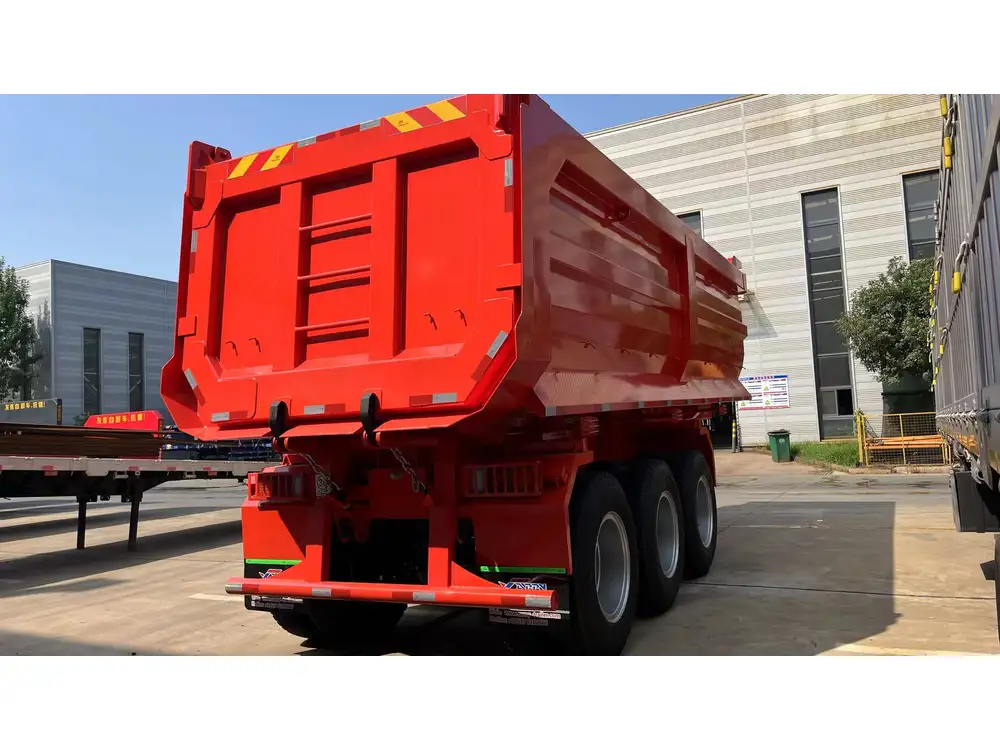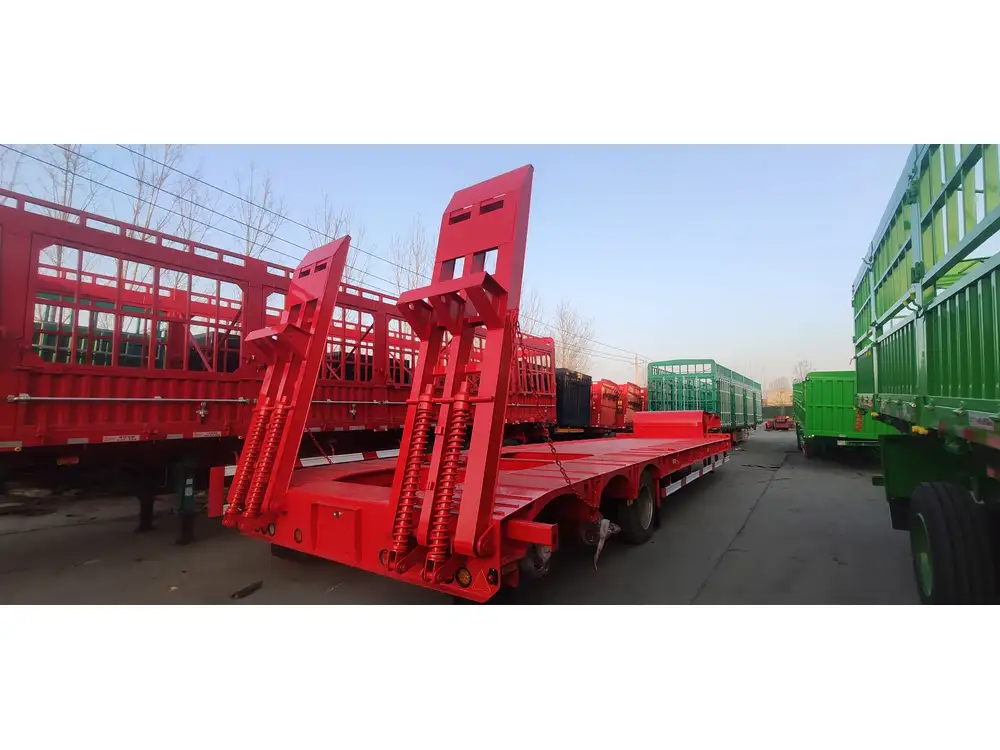When considering the purchase of a new tractor and trailer semi, various variables will come into play that can significantly impact your financial outlay. This article will delve into the multifaceted factors influencing the prices of tractors and trailers while also unraveling potential expenses that accompany such a significant investment.
Understanding the Market for Tractors and Trailers
To determine how much you can expect to invest in a new tractor and trailer, it is crucial to grasp the overarching dynamics of the market.
Key Factors Influencing Pricing
Brand: Renowned manufacturers such as Freightliner, Peterbilt, Kenworth, and Volvo often provide higher-quality vehicles, but at a premium price.
Type of Vehicle: There are different models of tractors, such as day cabs, sleeper cabs, and specialty vehicles designed for specific cargo types. Each model has its unique price range.
Specifications: The specifications you choose, such as engine size, transmission type (automatic versus manual), weight capacity, and additional features like advanced safety systems and tech integrations, will also drive the price.
Condition: New tractors and trailers have a higher upfront cost compared to used vehicles. However, warranties and the latest technology typically justify the expense for many buyers.

Price Range Overview
Understanding the typical price range for tractor and trailer combos can provide a clearer perspective on your budget. Below is a structured comparison of average costs:
| Vehicle Type | Average Price Range |
|---|---|
| New Tractor (Day Cab) | $100,000 – $150,000 |
| New Tractor (Sleeper Cab) | $150,000 – $200,000 |
| New Standard Trailer | $30,000 – $60,000 |
| New Refrigerated Trailer | $50,000 – $80,000 |
| Specialized Trailers | $60,000 – $120,000 |
These figures are approximations and can vary based on location, dealer pricing strategies, and specific configurations. Additional customizations can drive costs higher, especially for specialized trailers.
Breakdown of Costs
A deeper analysis of the costs associated with purchasing a new tractor and trailer semi will provide further insight.
1. Purchase Price
The purchase price is often the most significant initial expense. Buyers should be prepared for the following:
Tractor Costs: Depending on the model and features, new tractors can vary dramatically in price. For instance, sleeper cabs, designed for long-haul transportation, will typically command a higher price due to their comfort and amenities compared to day cabs.
Trailer Costs: Trailers can also vary widely; flatbeds, reefers, and dry vans each have unique pricing structures influenced by material selection, brand, and specialized features.

2. Financing Options
Understanding the financing landscape is crucial for effectively managing the costs associated with a new tractor and trailer semi.
Loans and Leasing: Many buyers opt for financing through loans or leasing agreements. Initial cash outlays are lower with leases, but over time, buyers may pay more than the outright purchase cost.
Credit Scores: Your credit score will influence your financing options, affecting interest rates and overall loan terms.
Insurance Costs: Comprehensive insurance coverage is crucial for protecting your investment. Rates will vary by provider but are an essential component of ongoing operating costs.
3. Initial Down Payments
The initial down payment can vary significantly between different lenders, and is generally a percentage of the total purchase price. Typically, down payments range from 10% to 20% of the vehicle’s cost. For instance:
- A new tractor costing $150,000 could require a down payment of $15,000 to $30,000.
- A trailer priced at $50,000 may necessitate an additional $5,000 to $10,000.
4. Maintenance and Operating Costs
Ownership extends beyond the initial purchase price; ongoing expenses must be considered.
Maintenance: Regular maintenance, including oil changes, tire replacements, and scheduled servicing, can significantly impact annual budgets. Generally, allocate around 10-15% of the purchase price annually for maintenance.
Fuel Costs: Fuel efficiency varies by model and additional weight, making it critical to consider fuel costs when projecting your overall expenses.
Repairs: High-quality machines may have fewer repairs, but setting aside a budget for unexpected repairs is a wise practice. Depending on usage, allocate approximately $0.05 to $0.10 per mile for repairs.

Comparing Tractor and Trailer Options
A Deeper Dive into Specifications
To better pinpoint the pricing associated with new tractors and trailers, consider the following category breakdown of specifications that impact performance and cost:
| Specification | Importance | Influence on Price |
|---|---|---|
| Engine Power (HP) | Maintains efficiency | Higher power = higher cost |
| Transmission Type (Auto/Manual) | Driver convenience | Automatics often pricier |
| Axle Configuration | Weight distribution | More axles = more expense |
| Safety Features (ABS, ESC) | Reduces accident risk | Safety tech can increase costs |
| Cab Design (Ergonomics, Space) | Driver comfort | More features can raise price |
Additional Considerations for Prospective Buyers

Regulated Factors
Compliance with Emission Standards: Many states enforce stringent emission regulations, necessitating the installation of particular equipment and alterations to maintain compliance. Such modifications can have a substantial impact on initial investment as well as ongoing operating costs.
Custom Modifications: Tailoring a tractor and trailer to specific needs—in terms of storage, loading mechanisms, etc.—can be beneficial. However, it is essential to be cognizant that custom features could exponentially increase prices.
Industry Trends
Recent trends in the trucking industry have shown an inclination towards eco-friendly and fuel-efficient machines, which can affect initial pricing.
Electric and Hybrid Options
- Recently, electric and hybrid models have emerged, boasting not only lower fuel costs but also often greater incentives for buyers. While the upfront costs are generally higher, long-term savings on fuel and maintenance are likely to be significant.

Technological Advancements
- Integration of technology such as telematics for fleet management and driver assistance systems enhances vehicle functionality. If you opt for advanced technology, it typically results in a higher base price but can lead to reduced operational inefficiencies.
Potential Savings and Incentives
Tax Benefits
Engaging with a financial advisor knowledgeable in commercial vehicle tax implications can provide insights into depreciation, tax credits, and local incentives.

Buying vs. Leasing
Leasing might offer lower monthly payments and the option for newer technology updates, whereas buying could yield ownership benefits. Scrutinizing both avenues through financial projections could help clarify the best path.
Conclusion: Making an Informed Decision
When grappling with the question: “How much for a new tractor and trailer semi?” it’s vital to recognize that the price extends beyond mere figures. Factors such as performance specifications, ongoing costs, compliance, and industry trends will all enmesh in determining the best investment for your specific scenario.
Through diligent research and consideration of all facets—market dynamics, financing, specifications, and personal business needs—prospective buyers can navigate the complex landscape of tractor and trailer procurement with greater confidence and foresight. Transitioning from mere inquiry to informed decision-making engages not only the numbers but the strategic planning essential for long-term success in transportation.



